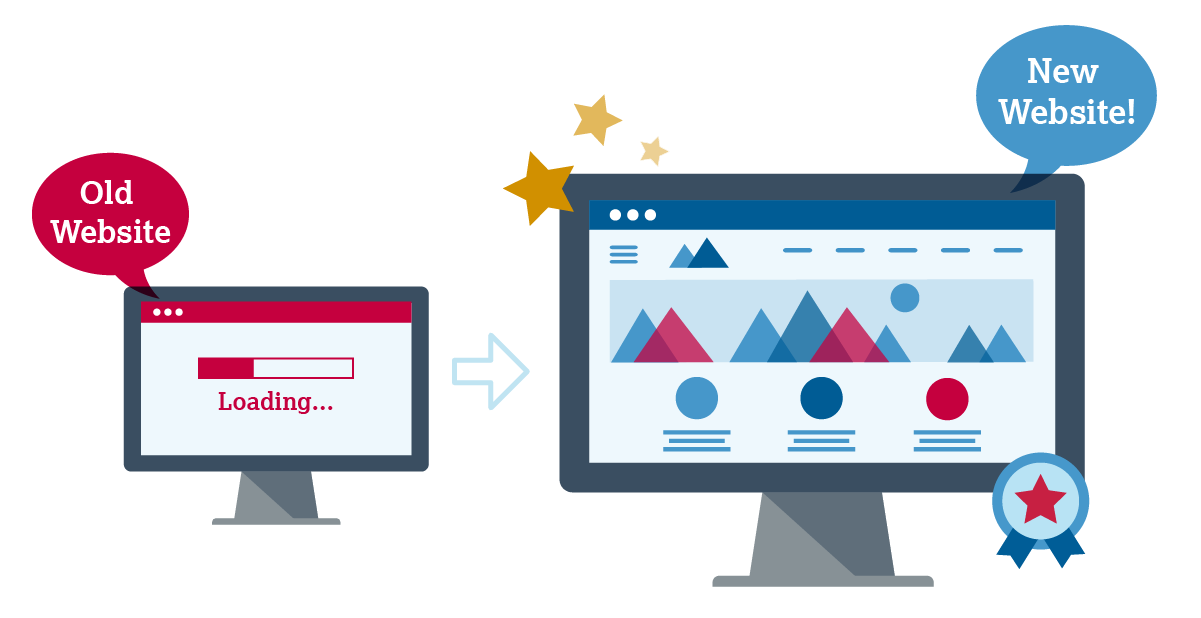Steps to a Successful Website Redesign

Tired of your slow, outdated website? Looking to breathe new life into your organization’s online presence? A website redesign might be the right move for you.
Is a Website Redesign Right for You?
Redesigning your website can be a powerful strategy to improve its effectiveness and better serve both your business and your customers. If your company has recently rebranded or changed its logo, modified its business objectives, or simply wants a fresh, updated look, a website redesign might be a worthwhile investment.
While it may seem like a challenging project, a well-planned website redesign, in collaboration with experienced marketing experts, can significantly boost your company’s online presence and performance.
Your Website Redesign Checklist
Step 1: Determine your redesign goals

Your website redesign should be guided by your brand’s business objectives. So, before you start planning for new pages or plug-ins, consider what specific goals you want to achieve through a website redesign. We recommend prioritizing user experience (UX), accessibility, and data-driven objectives like more conversions and higher site traffic over technology trends that might be all flash and no strategy.
Step 2: Benchmark current site performance metrics
Before making any redesign changes live on your website, use an SEO tool like Google Analytics to create a report of your current site’s performance metrics, including page load times, bounce rates, conversion rates, and average time spent on the site. These metrics will serve as a benchmark for how the redesigned website performs after launch.
Step 3: Conduct a content audit on your current site
Your current site might already have high-performing content or pages. Protect this important content—and your hard-earned SEO rankings—by taking an inventory of the content on your site with tools like Google Search Console or Semrush. Make note of the pages and keywords that generate the most relevant traffic, attract the most inbound links, convert the most leads, or address key topics in your industry.
Step 4: Create a 301 redirect strategy to protect important link value
A website redesign may involve changing URLs, which can send users on a frustrating search for pages that no longer exist. Google may also devalue these pages, particularly if they have external links pointing to them. Protect the SEO rankings of your most important pages by developing a thoughtful 301 redirect strategy. A 301 redirect is the online equivalent of forwarding your mail to a new address. It’s an HTTP status code that permanently redirects one URL to another, transferring all ranking power from the old URL to the new one.
Step 5: Perform keyword research
Keywords are constantly evolving, so it’s important to conduct regular keyword research to identify the most relevant search terms for your brand or business. Some best practices for keyword implementation include focusing on one keyword or topic for each page or post and refreshing keywords to address new branding goals or buyer personas. SEO tools like Semrush can also help you discover new keywords to target by analyzing competitors.
Step 6: Launch and test it out!
You’ve determined your redesign goals, noted your analytics benchmarks, identified your high-performing content, made a plan for 301 redirects, and implemented new keywords. Now you’re ready to build and launch your new site!
Of course, there’s a lot more to the website redesign process than we can cover in a single post. If you want to see how a website redesign could improve your business goals, browse Web Solutions’ client website portfolio and contact our team to learn more!
A Website Redesign Case Study
In 2024, Web Solutions helped longtime client QTL Lighting (formerly Q-Tran) with its website redesign. After undergoing a rebrand, QTL wanted to update its website with a more dynamic design that would accommodate animations and more custom editing capabilities to complement its beautiful product photography. Its biggest concern was that traffic might drop with the switch from a “.com” to a “.lighting” domain.
A traffic drop of 10% or less is normal after a website redesign as it takes search engines a few weeks to adjust to the change. But thanks to a coordinated plan of premarketing and web development, QTL Lighting’s search traffic actually increased in the weeks following its website redesign launch.
Stephen Marcum, QTL’s digital marketing strategist, said, “I attribute our success to three things: SEO planning, a solid CMS (Web Solutions has the cleanest code I have seen), and a great partnership with Web Solutions’ team.”


